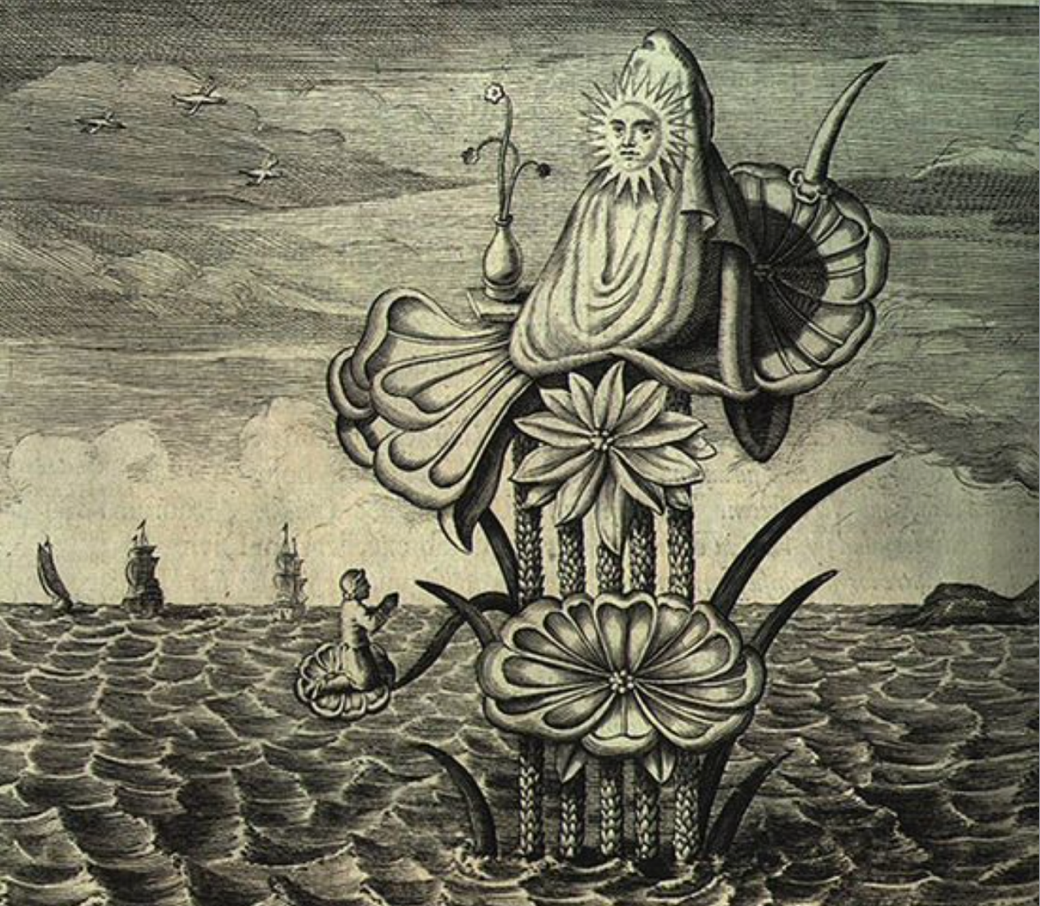
Kircher was a German Jesuit scholar and polymath who made significant contributions to the fields of mathematics, physics, astronomy, music, and linguistics. Born in Geisa, Germany, he joined the Society of Jesus in 1618 and studied in various Jesuit schools throughout Europe.
Kircher published over 40 books on a wide range of subjects, including a treatise on music theory, a study of Egyptian hieroglyphics, and a work on the plague. He is perhaps best known for his studies on magnetism and his attempts to decipher ancient languages, including Egyptian and Coptic.
Kircher’s work was highly influential in his own time, and he corresponded with many of the leading intellectuals of the day, including René Descartes, Johannes Kepler, and Christiaan Huygens. However, his reputation declined in the centuries following his death, as many of his theories and hypotheses were later proved to be incorrect.
Despite this, Kircher remains an important figure in the history of science and scholarship, known for his wide-ranging interests and his contributions to a wide variety of fields.
Arca Noë. Amsterdam, 1675 ➤
Arithmologia sive De abditis numerorum mysteriis. Roma, 1665 ➤ | ➤ | ➤ | ➤ | ➤ | ➤
Ars magna. Amsterdam, 1671 ➤
China monumentis. Amsterdam, 1667 ➤ | ➤ | ➤ | ➤ | ➤
La Chine … illustrée. Amsterdam, 1670
Diatribe De prodigiosis crucibus. Roma, 1661 ➤
Historia Eustachio-Mariana. Rome, 1665 ➤ | ➤ | ➤ | ➤ | ➤ | ➤
Itinerarium exstaticum. Roma, 1656 ➤ | ➤ | ➤
Iter exstaticum coeleste. Würzburg, 1660 ➤ | ➤
Iter exstaticum coeleste. Würzburg, 1671 ➤ | ➤ | ➤ | ➤ | ➤
Lingua Aegyptiaca restituta. Roma, 1643 ➤ | ➤ | ➤ | ➤ |➤
Lingua Aegyptiaca restituta. Roma, 1644 ➤
Magnes sive De arte magnetica. Roma, 1641 ➤ | ➤
Magnes sive De arte magnetica. Köln, 1643 ➤ | ➤ | ➤
Magneticum naturae regnum. Amsterdam, 1667 ➤ | ➤ | ➤ | ➤
Mundus subterraneus. Amsterdam, 1664 ➤
Mundus subterraneus. Amsterdam, 1665 ➤ |➤
Mundus subterraneus. Amsterdam, 1668 ➤
Mundus subterraneus. Amsterdam, 1678 ➤
Mundus subterraneus. Amsterdam, 1678 ➤ | ➤
Musaeum. Amsterdam, 1678 ➤
Musurgia unversalis. Roma, 1650 ➤ | ➤ | ➤ | ➤ | ➤
Naturelijke en geneeskonstige navorsching der peste. Rotterdam, 1669 ➤
Natürliche und Medicinalische Durchgründung der … Pestilentz. Augsburg, 1680 ➤ | ➤
Neue Hall- und Thon-Kunst, oder Mechanische Geheim-Verbindung der Kunst und Natur. Nordlingen, 1684 ➤
Obeliscus Pamphilius. Roma, 1650 ➤
Oedipus Aegyptiacus. Roma, 1652-1654 ➤ | ➤ | ➤ | ➤ | ➤ | ➤ | ➤ | ➤ | ➤ | ➤ | ➤ | ➤
Phonurgia nova. Kempten, 1673 ➤ | ➤
Physiologia Kircheriana experimentalis. Amsterdam, 1680 ➤
Polygraphia nova et universalis. Roma, 1663 ➤
Principis Christiani Archetypon politicum sive Sapientia. Amsterdam, 1672 ➤ | ➤ | ➤
Prodomus Coptus sive Aegyptiacus. Roma, 1636 ➤ | ➤ | ➤ | ➤ | ➤ | ➤ | ➤
Scrutinum physico-medicum contagiosae luis, quae dicitur Pestis. Roma, 1658 ➤ | ➤
Scrutinum physico-medicum contagiosae luis, quae dicitur Pestis. Leipzig, 1659 ➤ | ➤ | ➤
Scrutinum physico-medicum contagiosae luis, quae dicitur Pestis. Leipzig, 1671 ➤ | ➤ | ➤ | ➤ | ➤
Scrutinum pestis. Graz, 1740
Sphinx mystagoga, sive Diatribe hieroglyphica. Amsterdam, 1676 ➤ | ➤ | ➤ | ➤ | ➤
Tariffa Kircheriana. Roma, 1679 ➤ | ➤
Tooneel van China. Amsterdam, 1668 ➤